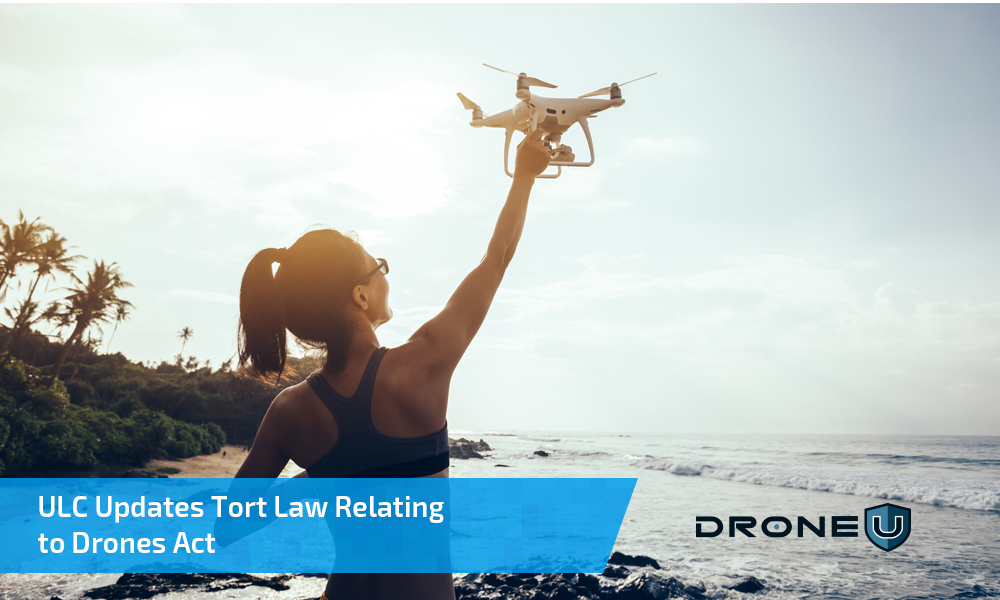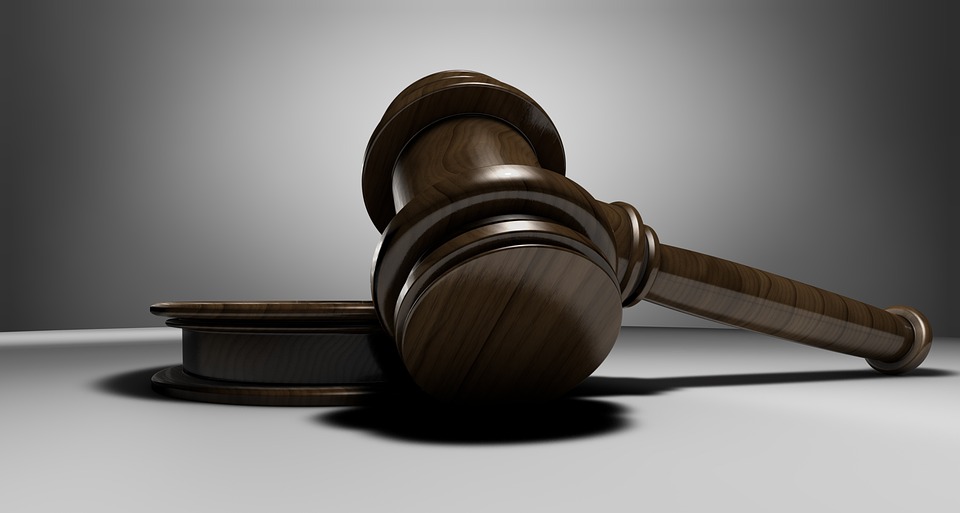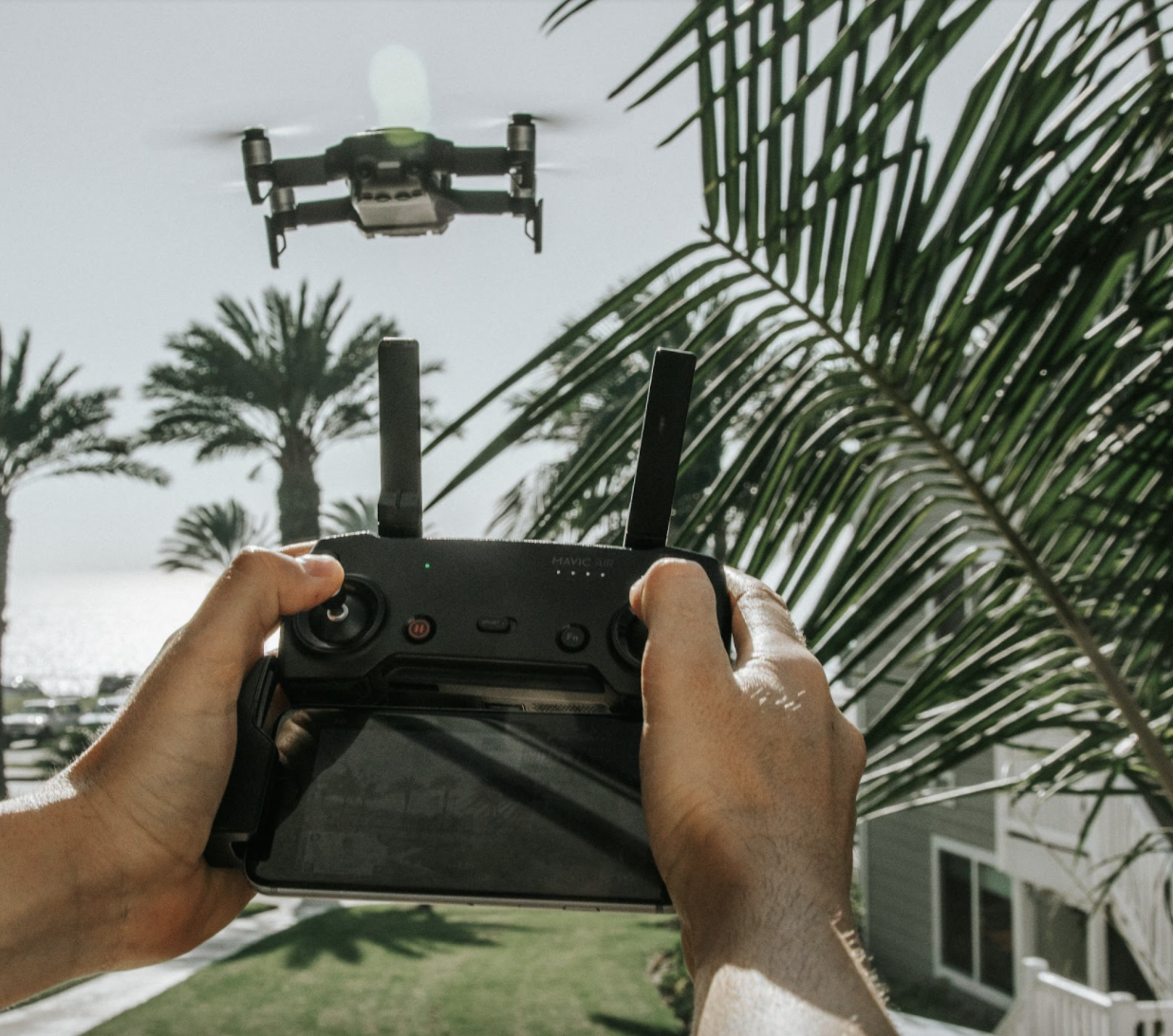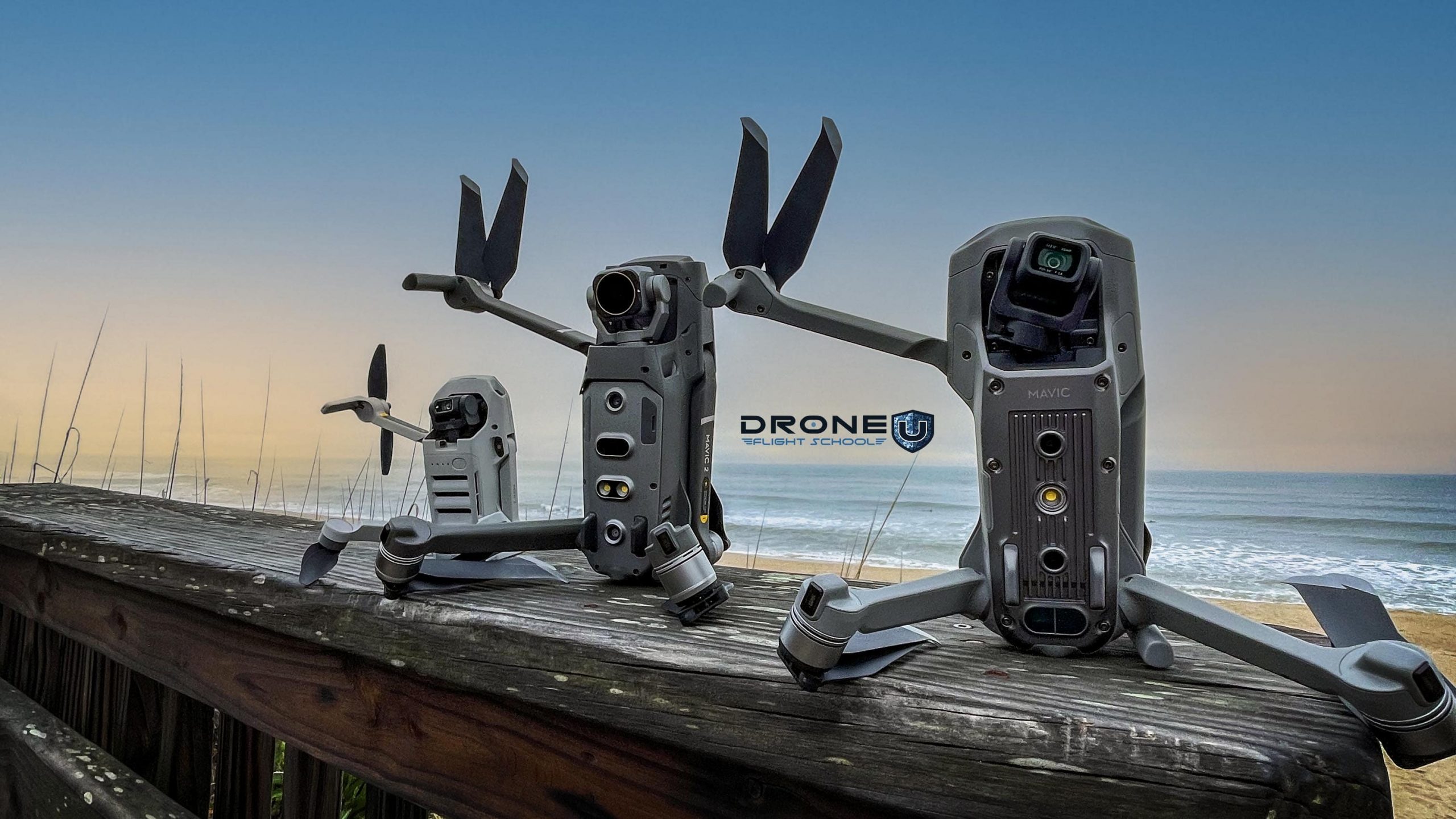

So where do we stand on the Uniform Law Commission updates Tort Law relating to the drones act? If you’ve been following along, you’ll understand that this is all about the future of drones, drone lawsuits, landowner rights, and drone privacy laws and rights. If this is the first time you’ve heard of it, read on. You’ll learn a bit along the way.
Table of Contents
The Uniform Law Commission (ULC) is a private nonprofit association of Bar Members and holds no official power. But, they hold significant influence over how states draft their laws. No Uniform Law Commission Act is active unless passed by a state legislature.
As U.S.-based drone pilots and operators, we can enjoy responsible flights in just about the entirety of the National Airspace System (NAS).
If the current Uniform Law Commission’s (ULC) committee working on the “Tort Law Relating To Drones Act” has its way, we could very likely lose 25% of that airspace.
And a very familiar name (who is not a friend to drone owners) has a very prominent position on that committee. And he is there wearing his Pepperdine University Law Professor hat instead of his AirMap Co-founder hat.
We are speaking of none other than Mr. Gregory McNeal. This author finds it very interesting that Mr. McNeal is there under the Pepperdine banner and not the AirMap banner. Maybe it’s because AirMap stands to make quite a bit of money if this Act passes and he doesn’t want to appear to have a vested financial interest in the outcome of that act. But that’s purely conjecture. More on that in a bit.
You may be familiar with AirMap’s previous skirmish with the UAS community when it came to light that they were supporting Senator Feinstein’s Drone Federalism Act (SB1272, 2017). AirMap’s hired lobbyists not only supported the bill financially, they actively lobbied other legislators to vote for it. At least that’s the presumption, given emails sent to some in the UAS community by Senators who don’t agree with Ms. Feinstein’s bill. SB1272 text can be found here.
That Act, if passed, would give control of the first 200’ of the NAS over to local legislators. That act currently sits in the Senate’s Committee on Commerce, Science, and Transportation. It’s been there since May of 2017 and given Senator Feinstein’s fall from grace within her party, it’s unlikely to be advanced out of committee. This is a very lucky break for drone owners, whether they fly under 101/336 or 107 rules. If passed, it could have given political subdivisions the ability to shut down commercial and hobby drone operations in “their” airspace. That would have effectively killed the commercial drone business in those locales.
Luckily that act now seems to be stuck in bill purgatory. And we as a community should do all in our power to make sure it stays there.
In November 2017, the Uniform Law Commission (ULC) introduced the Tort Law Relating to Drones Act Committee. In December, they published their first draft of that act. That first draft was so horrid that its language had the very real likelihood of destroying the Commercial sUAS (drone) Industry in its infancy. And it could have done the same thing to the hobbyists.

It’s been a frustrating and occasionally contentious battle for sure, but thanks to the diligence and actions of the sUAS Community, the final version of the Tort Law Relating to Drones Act being sent to Anchorage in July will be one that not only protects landowners from aerial trespass (the general point of the committee), it provides exceptions and protections for the sUAS community as well. Those protections are offered to both hobbyists and non-hobbyists alike.
The reason for this success is attributable directly to those within the sUAS community who took the time to get educated and involved.
Let’s now talk about how SB1272 coincides with the ULC Committee’s work on the tort law act.
Until this point in our history, there has not been an easily defined legal criterion for a charge of Aerial Trespass. There have been many court cases that define it in certain instances, but those are very limiting, and can’t be used to give a standardized legal definition in other cases. The Tort Law Relating To Drones Act, as currently written, will put into play a very easily defined legal definition of Aerial Trespass.
Section 501: Aerial Trespass Using An Unmanned Aircraft clearly states that that definition would be: “(a) A person operating an unmanned aircraft is liable to an individual for trespass, if, without consent, the person causes the unmanned aircraft to enter into the immediate reaches of the airspace above the land of another.”
On the surface, this seems unobjectionable, but to understand the magnitude of what this would do to the hobby and commercial drone communities, we need to look up “immediate reaches”. We don’t have to go far to find that definition. The authors of this Act were kind enough to provide that for us.
Under Section 102. Definitions include “(5) Immediate Reaches”. This is defined as the airspace from ground level to at least [100] feet above the surface, or where surface improvements are present, the airspace at least [100] feet above those surface improvements.”
Think about that. And that’s “at least”. This means cities and states can increase it if they want.
If you are flying in an urban area, you would not be allowed to fly over any residence or property at an altitude of 100’ or less (above any improvements) without the fear of being cited for Aerial Trespass.
Now again, on the surface, this may not sound too limiting. But let’s put a real-world drone spin on it.
If you use a drone for real estate photography and videography, you find yourself routinely flying below 100’ above improvements on adjoining property. Insurance and inspection flights routinely fall under that same demand. Neither of those UAS disciplines can effectively do their jobs if they are limited to being 100’ or above adjoining property improvements.
And those are just two examples. There are plenty more.
Current aerial trespass doctrine is, “Flight by an aircraft in the air space above the land of another is trespass if
(1) “[the aircraft> enters into the immediate reaches of the air space next to the land.
(2) [it] interferes substantially with the other’s use and enjoyment of the land.” The ULC committee feels this definition is problematic because “there is no existing right to exclude aircraft from flying above one’s land without showing interference with use and enjoyment of the land.”
They also are trying to make it sound like they are doing the UAS communities a favor because “this will likely prove problematic as it will require a fact-specific showing related to each overflight before an unmanned aircraft could be excludable, leading to uncertainty and lack of uniformity.”
The committee feels if there is a legal definition of 100’ as “immediate reach”, it will make our jobs easier because we’ll have the uncertainty of where we’re allowed to fly removed from the equation.

This can’t be further from the truth, and smacks of behind-the-scenes activity with zero input from the people this will directly affect. It appears Mr. McNeal does have a Remote Pilot Certificate (at least someone with his name does), but apparently, none of the other representatives do. There are two members with names too common to check, so that is also a possibility. But if Mr. McNeal is the only one “representing” UAS owners, we’re screwed.
While I commend Mr. McNeal for getting his 107RPC, I’d like to see someone on that committee who uses their 107RPC to make money with, not someone who uses it to make money from.
There is a difference.
Why does the history of Mr. McNeal seem to suggest that he wants to drastically limit where drone owners can fly? Do a bit of research on that failure. But it was his first attempt at restricting our rightful access to the NAS.
To answer that questions, we need to look no further than the company that Mr. McNeal founded with Mr. Ben Marcus: AirMap.
AirMap is a company that has developed an app that allows UAS operators and pilots to see if they are in a safe area to fly. Very commendable. And their product is awesome. It’s the backbone of DJI’s GEO System. We don’t use it (We use Skyward, and KittyHawk once it comes online), but those who do seem to like it very much.
But behind the scenes, AirMap desires to work with states and localities to implement Unmanned Aircraft System Traffic Management (UTM). More info here.
UTM is a great idea, and in practice will make the skies safer. However, if done incorrectly, or with undue influence from companies that will directly benefit from its implementation, it can and probably will lead to a pay-to-play system. There you will have to subscribe to a service before you can fly in certain airspaces. In other words, pay the subscription or not fly there. Even though we have that right currently.
AirMap already has its foot in the door in Kansas. If McNeal and Marcus end up being the chosen UTM provider for the other 49 states, they stand to make a ton of money. And there is nothing wrong with that. It’s the American Dream. But it shouldn’t be at the expense of an entire industry.
When they stand to make that money on the backs of an industry they publicly profess support for, their words become very disingenuous.
You have to ask yourself why a company would actively try to make it harder for UAS owners to fly in the U.S. Especially if that company is supposedly working with us, to gain quicker access to the NAS in restricted areas. Are you working for us, or against us AirMap?
These actions seem to speak volumes about the seemingly true intent of their business model. It’s about making money, not keeping the NAS safe, or tenant/homeowner privacy.
Given the track record of the founders of AirMap, we strongly suggest that UAS owners, both 101/336 & 107, keep a very close eye on this committee’s work. If it continues down this path, keep your Congress Critters informed of what will happen if the Uniform Law Commission’s Tort Law Relating To Drones Act is put into law.
Before I get into specific parts of the final draft of the ULC”s “Tort Law Relating to Drones Act”, go here and download it. Open it up so you can follow along below. Otherwise, I’d have to quote the draft and this would be a 10,000-word article. And no one wants to read one of those.
Please read through it and include Comments under each section. This will help you understand the thinking of the committee members on why that language was chosen or included.
So let’s talk about a few sections. First, the cons (honestly, there aren’t many):
And that’s pretty much it when it comes to the major bad parts of this act. There are arguably some annoying parts, but I’m of the mindset that it’s okay to lose a skirmish or two, as long as you win the war. And in my opinion, we won this war hands down.

Okay, the pros (or at least the highlights of the pros):
As mentioned above, this is so much better than the initial language published by this committee; it’s night and day. There is nothing we can’t live within the final draft, and there’s plenty that protects us.
Another way you can tell this leans in our direction as drone owners are that there was one very vocal attorney on the committee that insisted that the final draft of the “Tort Law Relating to Drones Act” had turned into a drone operator’s Bill of Rights. He is a land use attorney, so we see his point of view, but he mentioned several times how he felt during the teleconferences.
On July 12-18th, this Tort Law Relating to Drones Act will be read in front of the entire Uniform Law Commission (ULC) membership in Anchorage. It will be its second reading at a National Conference and voted on by the entire ULC, as required. During that time, there may be additional discussions and revisions before the vote, however, it shouldn’t change much. If the act passes, it is published and becomes a template of sorts for any state wishing to craft drone tort law.
At that point, our focus as an industry would need to turn towards our state legislatures, because that’s where this language would be turned into law. Keep an eye on your state’s legislative sessions each year (especially for the next couple of sessions) and watch out for any drone tort laws being drawn up. If you see some, compare the language to the Uniform Law Commission language, and make sure they’re similar.
If not, get in touch with the bill’s sponsors and offer assistance. And make sure you have a well-educated coalition of your state’s drone owners prepared to graciously raise a stink over any unfavorable legislation.
This entire process, from the initial horrid language in November of 2017 to the final draft, is a testament to the willingness to set aside what seems to be our petty differences and fight together for a favorable outcome. This is a perfect example of the power we have as a single voice singing the same tune.
We’d like to see us continue that camaraderie when it comes to DAC issues, or even when the FAA brings about new regulations. We need to all fight for what’s best for the entire community, not just our little section of that pie.
And of course, we need to publicly thank those Uniform Law Commission (ULC) committee members who were open to discourse and had an open mind to our concerns. We genuinely believe they had honorable intentions at the beginning, yet we’re just not educated enough about the subject of drones to understand how their initial language would truly affect us. And that’s not meant as a negative. They were (mostly) incredibly open to suggestions from us. That’s all we should ever expect.
A tort is an action or omission that causes damage to someone else. It can also be called a wrongful act. In law, a tort is any breach of duty owed to another person or entity.
Tort Law Definition
Tort law is the field of law that deals with civil lawsuits arising out of personal injury or property damage caused by negligence. Most legal claims fall within tort law. Tort law is designed to compensate victims for injuries they suffer due to the negligent actions of another party.
The idea behind tort law is to make people responsible for their own mistakes and not let them get away with harming others through careless behavior.
A tort claim is any act that harms someone’s health or wellbeing, thereby violating their rights and making the offender liable for their sufferings and damage. When found legally responsible for such an injury, the liable party may be ordered to compensate the injured party for the physical, emotional, or other financial losses they’ve incurred.
The Torts are mainly classified as Intentional Torts and Negligent Torts.
Intentional Torts: An intentional tort is any act committed with the intent to cause harm or injury to another person or property.
Negligent Torts: Negligence tort occurs whenever someone fails to act carefully enough and causes harm to others.
Note: The information on this page is provided for informational purposes only and is not intended as a substitute for legal advice.